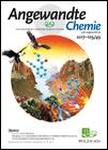版权所有:内蒙古大学图书馆 技术提供:维普资讯• 智图
内蒙古自治区呼和浩特市赛罕区大学西街235号 邮编: 010021

作者机构:Guangdong Basic Research Center of Excellence for Ecological Security and Green Development Collaborative Innovation Institute of Carbon Neutrality and Green Development School of Ecology Environment and Resources Guangdong University of Technology Guangzhou 510006 P. R. China School of Environment and Energy Key Laboratory of Pollution Control and Ecosystem Restoration in Industry Clusters (Ministry of Education) South China University of Technology Guangzhou 510006 P. R. China Centre for Atomaterials and Nanomanufacturing (CAN) School of Science RMIT University Melbourne VIC 3000 Australia ARC Industrial Transformation Research Hub for Intelligent Energy Efficiency in Future Protected Cropping (E2Crop) Melbourne VIC 3000 Australia School of Chemical Engineering and Light Industry Guangdong University of Technology Guangzhou Guangdong 510006 P. R. China State Key Laboratory of Photocatalysis on Energy and Environment College of Chemistry Fuzhou University Fujian 350116 P. R. China
出 版 物:《Angewandte Chemie》
年 卷 期:2024年第137卷第5期
学科分类:081704[工学-应用化学] 08[工学] 0817[工学-化学工程与技术]
主 题:single-atom catalysts CO2 photoreduction d-band centers coordination engineering conductive MOFs
摘 要:Photocatalytic reduction of diluted CO 2 from anthropogenic sources holds tremendous potential for achieving carbon neutrality, while the huge barrier to forming *COOH key intermediate considerably limits catalytic effectiveness. Herein, via coordination engineering of atomically scattered Ni sites in conductive metal–organic frameworks (CMOFs), we propose a facile strategy for tailoring the d-band center of metal active sites towards high-efficiency photoreduction of diluted CO 2 . Under visible-light irradiation in pure CO 2 , CMOFs with Ni-O 4 sites (Ni-O 4 CMOFs) exhibits an outstanding rate for CO generation of 13.3 μmol h −1 with a selectivity of 94.5 %, which is almost double that of its isostructural counterpart with traditional Ni-N 4 sites (Ni-N 4 CMOFs), outperforming most reported systems under comparable conditions. Interestingly, in simulated flue gas, the CO selectivity of Ni-N 4 CMOFs decreases significantly while that of Ni-O 4 CMOFs is mostly unchanged, signifying the supremacy for Ni-O 4 CMOFs in leveraging anthropogenic diluted CO 2 . In situ spectroscopy and density functional theory (DFT) investigations demonstrate that O coordination can move the center of the Ni sites′ d-band closer to the Fermi level, benefiting the generation of *COOH key intermediate as well as the desorption of *CO and hence leading to significantly boosted activity and selectivity for CO 2 -to-CO photoreduction.